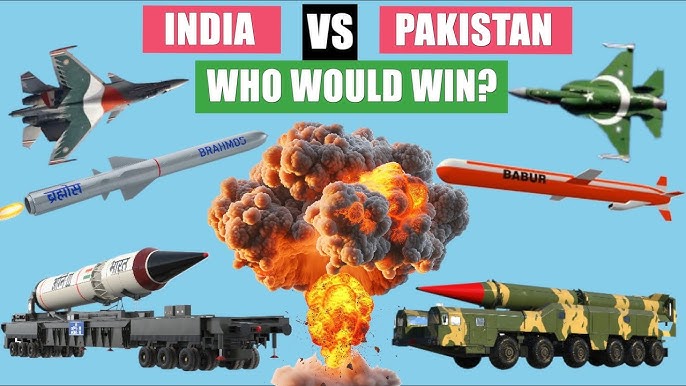In early 2025, the Indian subcontinent once again found itself at the edge of a crisis. Years of rising tensions, skirmishes along the Line of Control (LoC), and diplomatic failures finally culminated in open conflict. The operation that would define this war was code-named Operation Sindoor—a high-risk Indian military campaign designed to deliver a decisive blow and bring an early resolution to hostilities. The conflict lasted just 42 days, but its consequences may shape South Asia for decades.
The Buildup to War
Following a series of militant attacks in Indian-administered Kashmir in late 2024—allegedly traced back to Pakistan-based groups—India issued stern diplomatic warnings. Cross-border firing intensified, and for weeks, both sides engaged in aerial surveillance and psychological warfare. Meanwhile, Pakistan accused India of backing separatist movements in Balochistan and escalating unrest through intelligence operations.
International mediation efforts by the United Nations, the U.S., and Russia failed as both nations dug in their positions. Then, on February 3, 2025, India launched Operation Sindoor—a limited but swift combined arms offensive in the sectors of Poonch, Rajouri, and Sialkot.
Operation Sindoor: Objectives and Strategy
The name “Sindoor” (meaning vermilion, symbolizing sacrifice and victory in Indian culture) was chosen to reflect both cultural resolve and strategic ambition.
Key Objectives:
-
Destroy forward Pakistani logistics in Sialkot and Shakargarh bulge.
-
Sever key supply lines along the Jammu–Rawalpindi axis.
-
Capture and hold key high-ground positions in Poonch-Rajouri for leverage in post-war negotiations.
-
Avoid deep penetration into civilian areas to prevent international backlash.
India used satellite-based intelligence, artificial intelligence-assisted targeting, and integrated battle groups (IBGs) to ensure rapid maneuver warfare. Air dominance was quickly established over northern Jammu and Punjab sectors using Mirage 2000 and Su-30 MKI squadrons, supported by Israeli-origin UAVs and indigenous DRDO drones.
Pakistan’s Counter Strategy
Caught off guard by the scale and speed of Operation Sindoor, Pakistan’s initial response was a combination of defensive counterstrikes and mobilization of reserve forces. The Pakistan Air Force (PAF) launched multiple retaliatory strikes using JF-17 Thunders and F-16s, targeting Indian forward bases in Pathankot and Akhnoor.
The Pakistan Army, recognizing India’s emphasis on speed, resorted to a scorched-earth tactic in some sectors and quickly shifted to asymmetric tactics, deploying special operations forces across infiltration routes in Kashmir.
Nuclear Threshold Doctrine Tested
As India’s forces neared the town of Narowal and skirmishes broke out near Muridke—just 60 kilometers from Lahore—Pakistan hinted at lowering its nuclear threshold, issuing statements about “red lines” being crossed. India, in turn, conducted high-profile missile drills, activating parts of its strategic command.
This nuclear posturing prompted global alarm. U.S. satellites detected heightened readiness at several Pakistani missile silos and Indian Agni launch platforms. China and Russia immediately called for a ceasefire, while the U.N. Secretary-General convened an emergency Security Council session.
Civilian and Economic Fallout
In just six weeks of fighting:
-
Over 3,200 military casualties were reported on both sides.
-
Civilian casualties exceeded 9,000, with over 2 million displaced in border regions.
-
Pakistan’s economy contracted by 4.5%, with its rupee falling by 18%.
-
India’s stock market saw the sharpest one-day drop since 2020, though it recovered quickly.
Power grids were targeted in both countries. Major cyberattacks crippled internet infrastructure in Rawalpindi, while Indian rail networks suffered temporary blackouts.
Endgame and Ceasefire
On March 16, 2025, after 42 days of fighting, a U.S.-brokered ceasefire was announced. Under the agreement:
-
Both nations withdrew to pre-war positions, with India retaining some high-ground control in Rajouri.
-
Prisoners of war were exchanged within two weeks.
-
A new South Asia Peace and Verification Commission (SAPVC) was created to oversee future ceasefire violations.
-
India agreed to a phased demilitarization in certain sensitive areas in exchange for anti-terror guarantees by Pakistan.
Operation Sindoor officially ended, and the war was declared over—but peace remained fragile.
Analysis of the Conflict
India’s Strategic Success
Operation Sindoor was, by military standards, a tactical success. India demonstrated superior coordination between its army, air force, and cyber units. Use of drones, smart munitions, and electronic warfare gave it battlefield dominance early in the campaign.
The primary goals—neutralizing Pakistani forward positions and applying psychological pressure—were achieved without triggering full-scale nuclear escalation. India also gained symbolic political capital domestically and signaled its red lines internationally.
Pakistan’s Tactical Defense
While caught off guard initially, Pakistan’s forces showed resilience. Their quick switch to decentralized resistance and asymmetric warfare prevented deeper Indian advances. More importantly, by playing the nuclear card effectively, they forced the international community to act, halting India’s momentum before it became a strategic rout.
Global Response
United States
Called for restraint, but quietly supported India’s right to self-defense. Played a key role in brokering the ceasefire.
China
Remained officially neutral but moved PLA forces along the Line of Actual Control (LAC), signaling discomfort with instability near its border.
Russia
Supplied intelligence and logistics to India while calling for peace. Also played a behind-the-scenes diplomatic role.
United Nations
Established an investigative committee on civilian casualties and possible war crimes, especially concerning urban shelling near Sialkot and Kupwara.
Aftermath and Future Risks
Despite the end of open hostilities, the 2025 conflict left deeper scars than previous wars. Nationalism surged in both countries. Armed forces began massive rearmament programs. Militants used the ceasefire as propaganda, while border populations remained vulnerable.
Most worrying was the erosion of nuclear deterrence credibility. The world saw how close two nations came to crossing the unthinkable line—and how easily that line can blur in real-time conflict.
Conclusion on Operation Sindoor
The 2025 India-Pakistan war, marked by Operation Sindoor, served as a stark reminder of the volatility that still haunts South Asia. Though the conflict ended without nuclear devastation, it reinforced how fragile peace is when diplomacy is sidelined by military ambition and mistrust.
Both nations claimed victory. But the only real victor was the pause button on catastrophe, pressed just in time by global pressure. Unless both countries address the root causes—Kashmir, terrorism, water rights, and nationalism—Operation Sindoor may become a prelude, not a conclusion.


